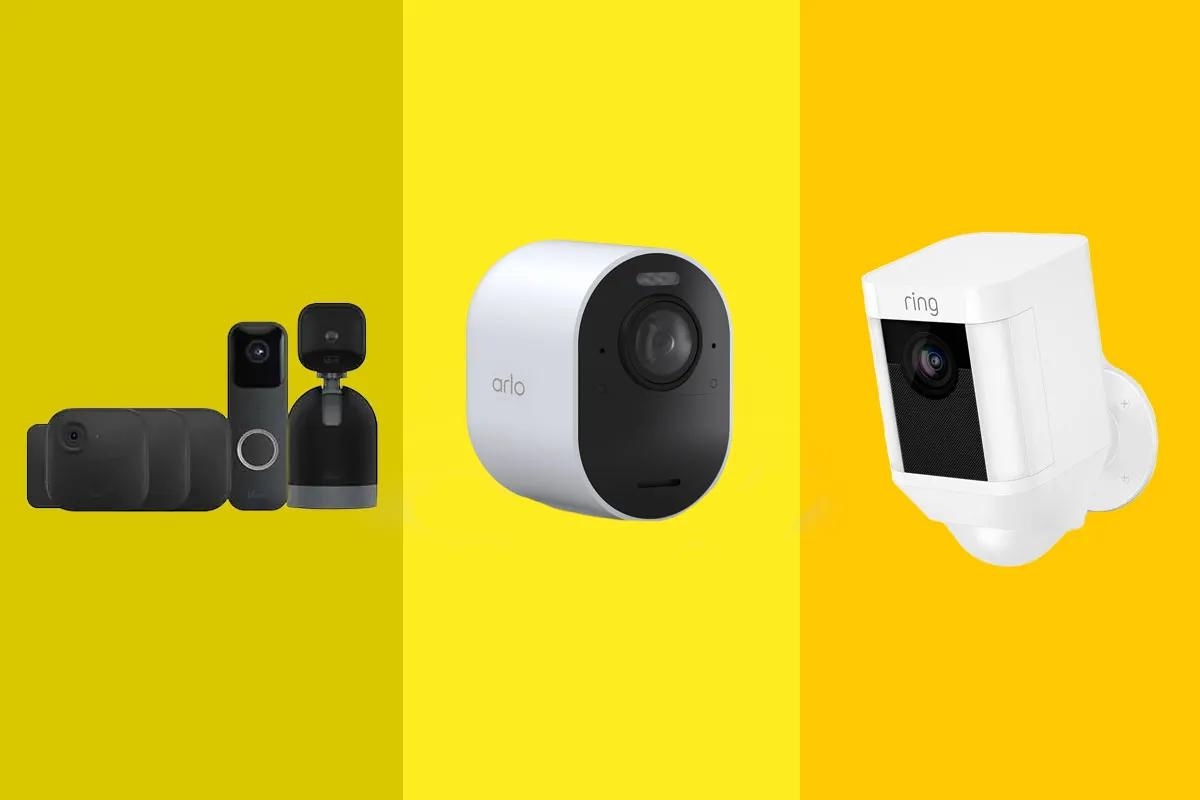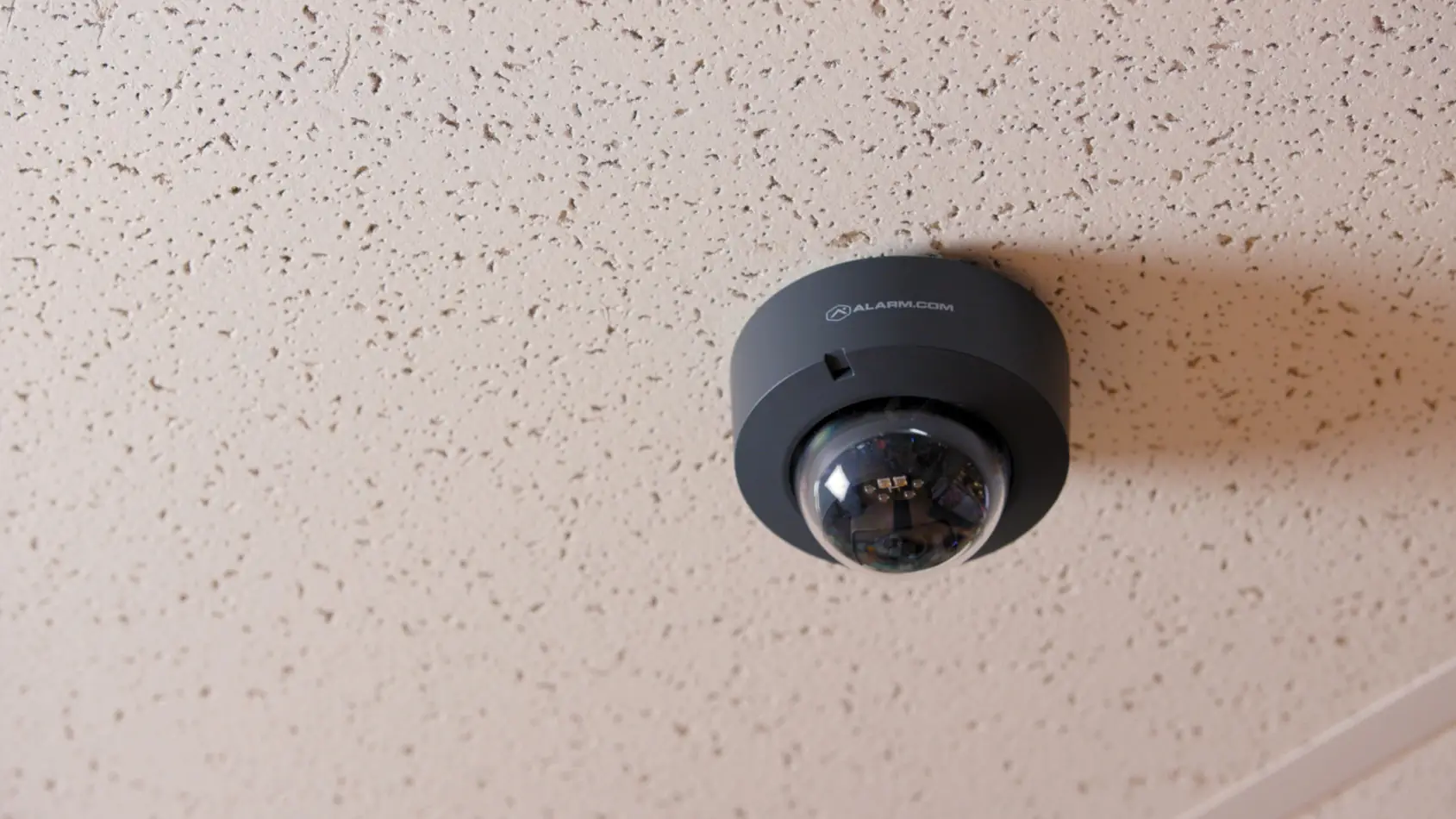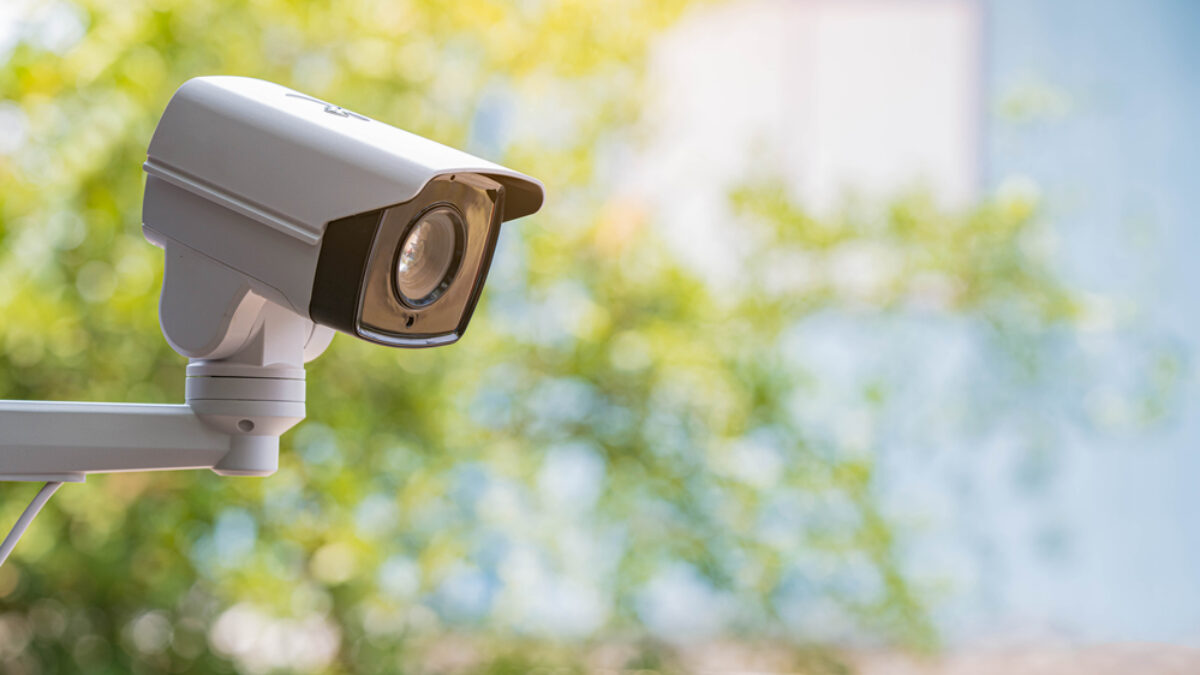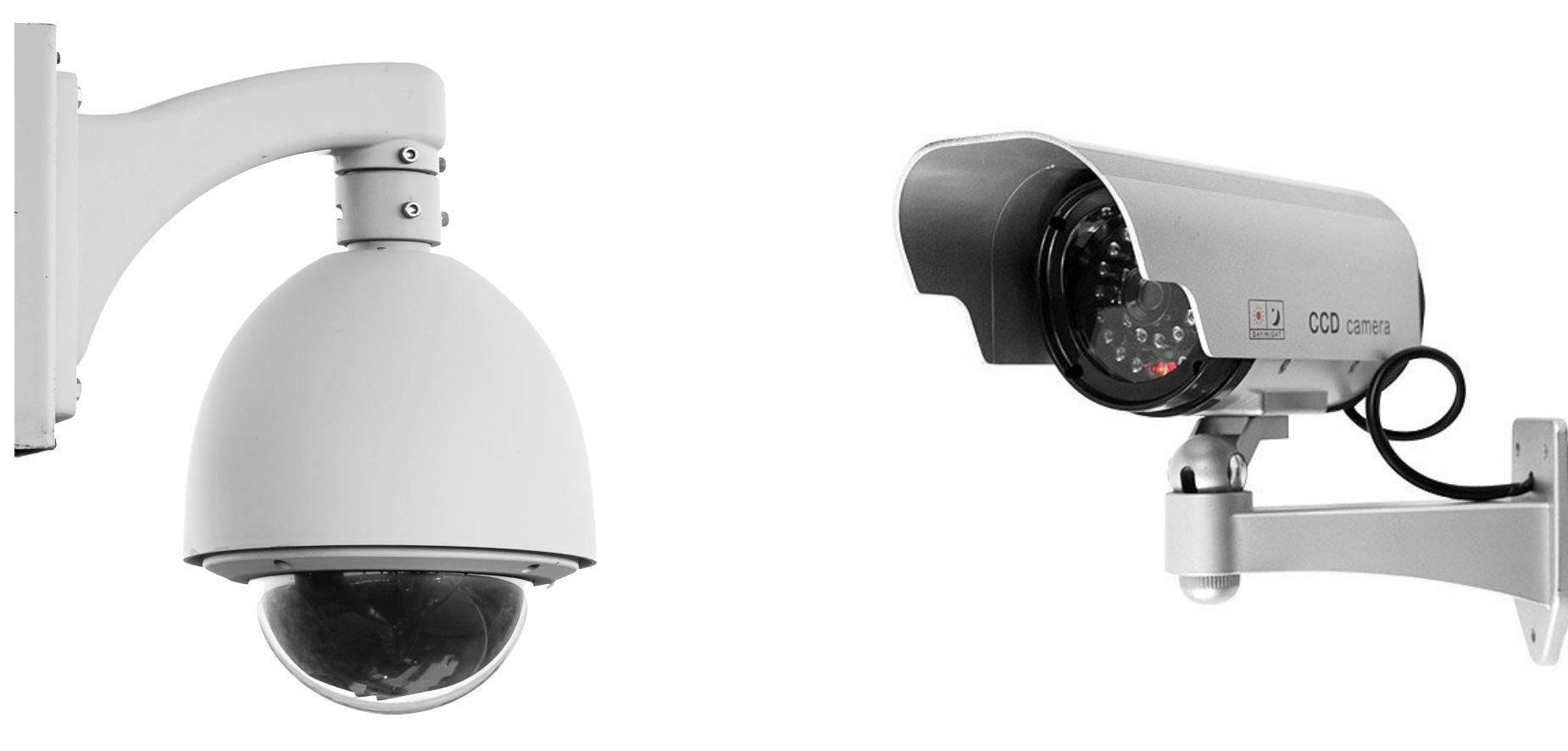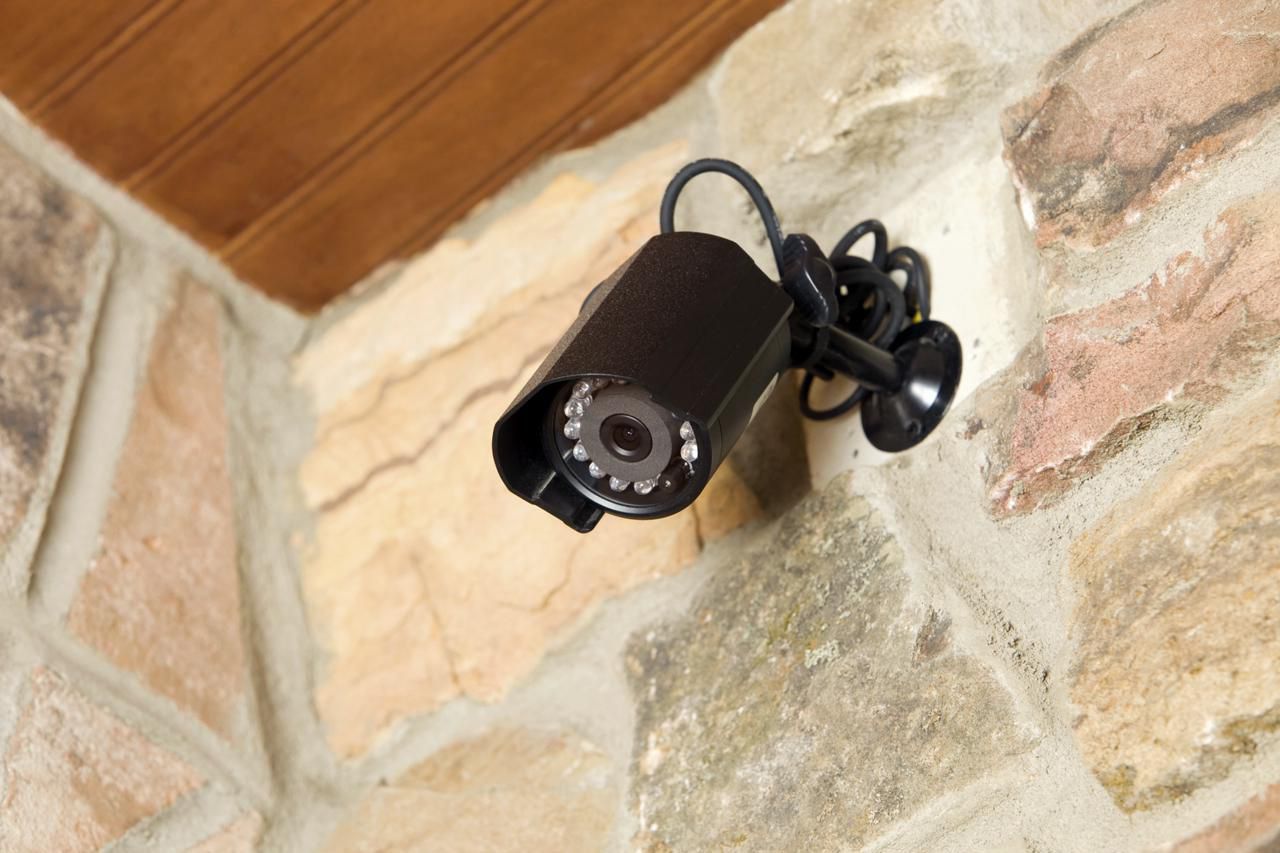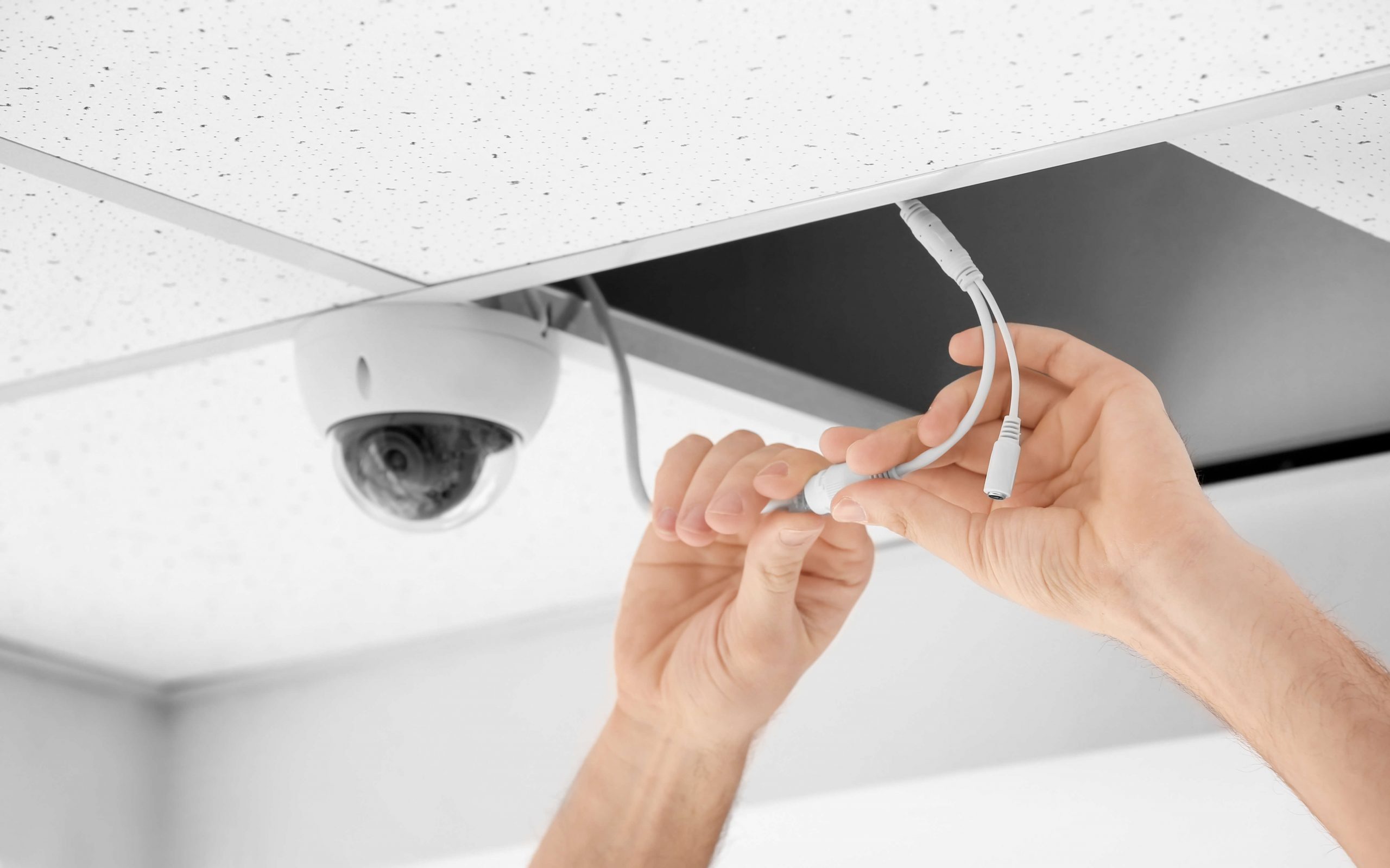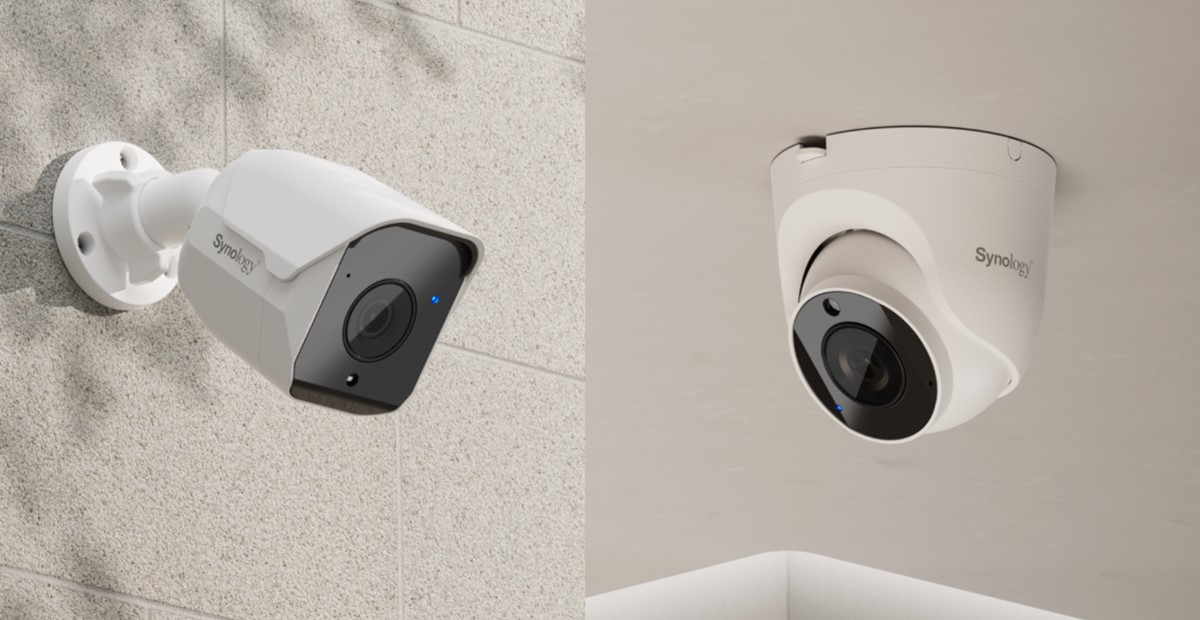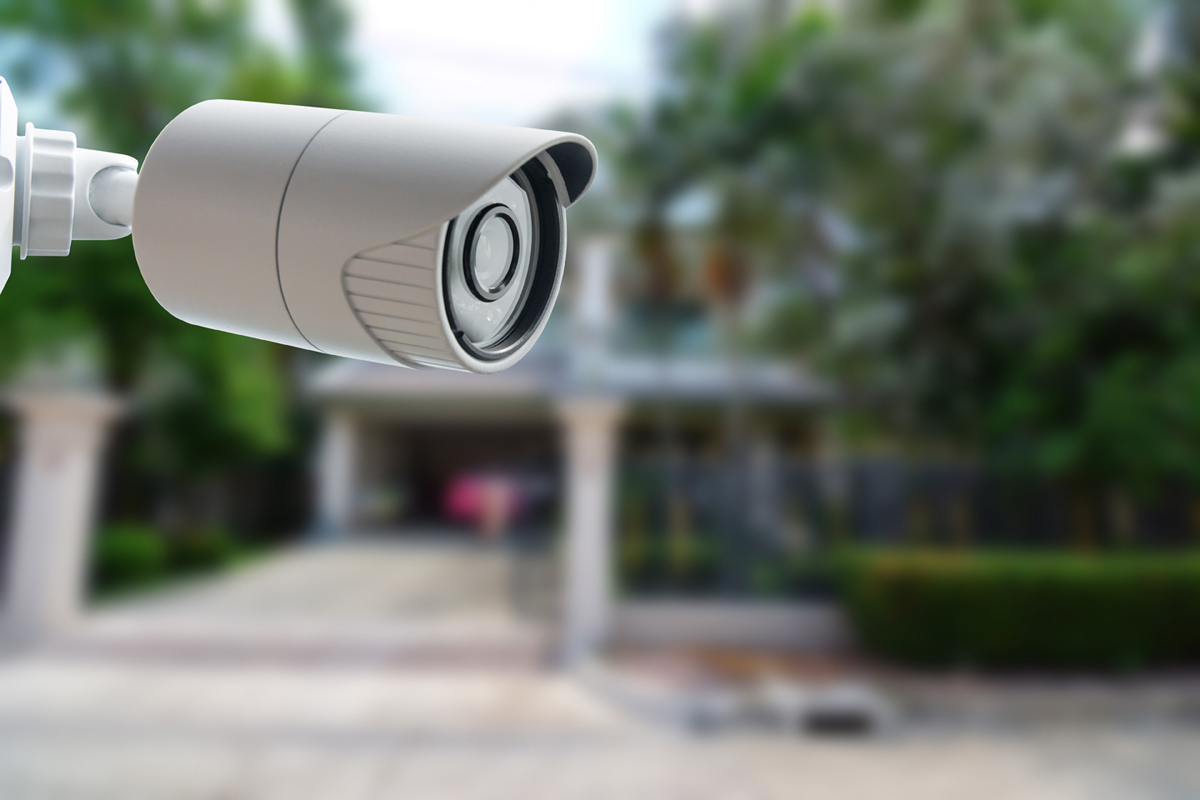Home>Home Security and Surveillance>What To Do If Your Security Camera Is Hacked
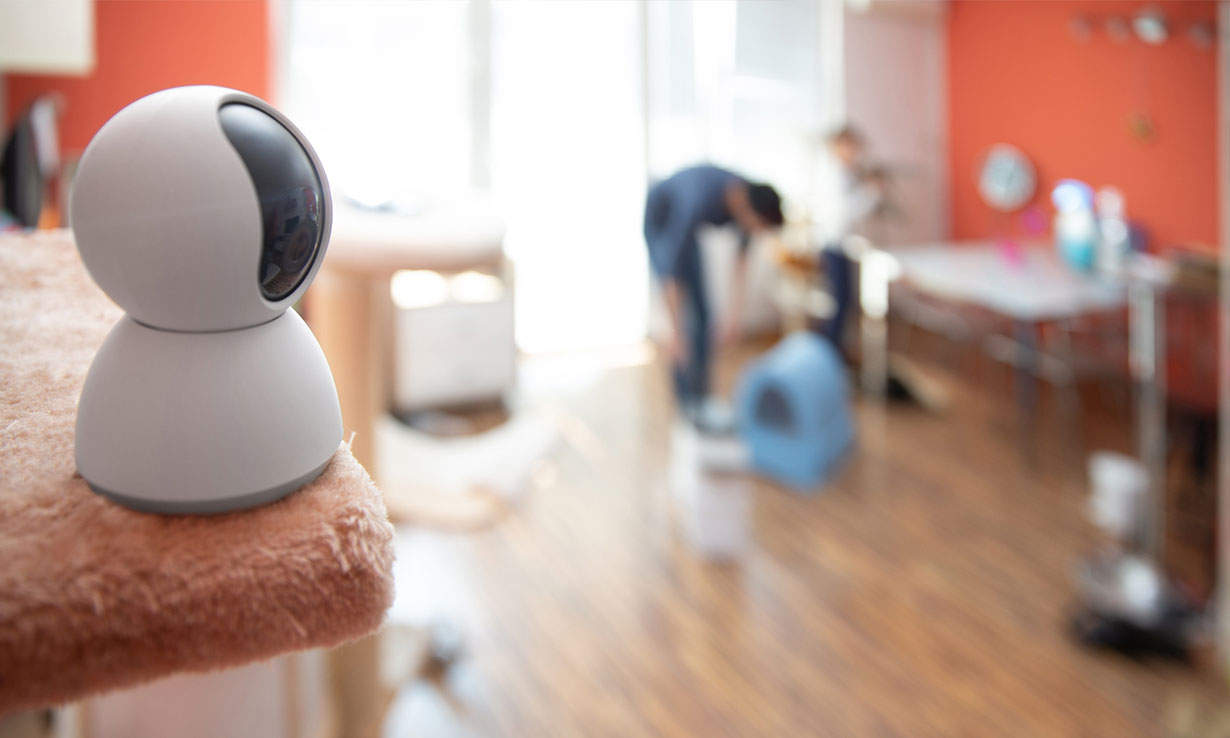

Home Security and Surveillance
What To Do If Your Security Camera Is Hacked
Modified: March 6, 2024
Protect your home with our Home Security and Surveillance systems. Learn what steps to take if your security camera gets hacked for ultimate peace of mind.
(Many of the links in this article redirect to a specific reviewed product. Your purchase of these products through affiliate links helps to generate commission for Storables.com, at no extra cost. Learn more)
Overview
Home security and surveillance systems are an essential tool in ensuring the safety and protection of your family and property. These systems provide peace of mind by providing real-time monitoring and recording of activities in and around your home.
However, with the increasing sophistication of hackers and cybercriminals, there is a growing concern about the security of these devices. A hacked security camera can not only compromise your privacy but also leave you vulnerable to burglary or other criminal activities.
In this article, we will discuss the steps you should take if you suspect that your security camera has been hacked. By following these steps, you can regain control of your system and prevent any further unauthorized access.
Key Takeaways:
- Signs of a Hacked Camera
If your security camera shows unusual movements, settings changes, or unauthorized recordings, it may be hacked. Stay alert and take action to protect your privacy and home security. - Steps to Secure Your Camera
If you suspect a hack, disconnect the camera, secure your network, reset to factory settings, and monitor activity. Seek professional help if needed. Stay proactive to protect your home.
Read more: What Security Cameras Cannot Be Hacked
Step 1: Identify the signs of a hacked security camera
The first step in addressing a hacked security camera is to recognize the signs that indicate a breach. These signs may include:
- Unusual activities or behaviors: If you notice unexpected movements or strange sounds coming from your camera, it could be a sign of unauthorized access.
- Suspicious changes in camera settings: If the camera settings have been altered without your knowledge, such as changes in recording schedules or remotely disabling certain features, it could be a red flag.
- Unauthorized access to recordings: If you find recorded footage that you did not authorize or are missing recordings altogether, it may indicate a security breach.
Step 2: Disconnect the compromised camera
Once you suspect that your security camera has been hacked, it’s crucial to disconnect it from the network to prevent further unauthorized access. You can do this by:
- Physically disconnecting the camera: Unplug the camera from its power source or remove the batteries to disable its functionality.
- Disable internet connectivity: If your camera is connected to Wi-Fi, access your router settings and disable the internet connection for that specific camera.
- Disconnect power supply: If your camera is directly powered by an electrical outlet, remove its power source to cut off its connection.
By disconnecting the compromised camera, you can prevent hackers from accessing your system and limit potential damage.
Step 3: Secure your network
Protecting your network is crucial in preventing future hacking attempts. Here are some steps to enhance your network’s security:
- Change the Wi-Fi password: Reset your Wi-Fi password to ensure that no unauthorized devices can connect to your network.
- Update router firmware: Keep your router firmware up to date to benefit from the latest security patches and bug fixes.
- Enable two-factor authentication: Add an extra layer of security by enabling two-factor authentication for your router or network access.
Key Takeaways:
- Signs of a Hacked Camera
If your security camera shows unusual movements, settings changes, or unauthorized recordings, it may be hacked. Stay alert and take action to protect your privacy and home security. - Steps to Secure Your Camera
If you suspect a hack, disconnect the camera, secure your network, reset to factory settings, and monitor activity. Seek professional help if needed. Stay proactive to protect your home.
Read more: What Security Cameras Cannot Be Hacked
Step 1: Identify the signs of a hacked security camera
When it comes to securing your home, a security camera plays a crucial role in monitoring and deterring potential threats. However, if your security camera is hacked, it can compromise both your privacy and the safety of your home. Therefore, it’s crucial to be able to identify the signs of a hacked security camera. Here are three key indicators to look out for:
Read more: How To Hack Into Security Cameras
Unusual activities or behaviors
One of the most noticeable signs of a hacked security camera is unusual activities or behaviors. If you notice strange movements or unexpected sounds coming from your security camera, it could indicate unauthorized access. Hackers may try to control the camera remotely, panning, tilting, or zooming in on specific areas. These unauthorized movements can be a cause for concern, especially if they are not commands that you have given or programmed into your camera’s settings.
Suspicious changes in camera settings
Another sign of a hacked security camera is suspicious changes in camera settings. If you find that your camera settings have been altered without your knowledge or consent, it is a clear indication that someone has gained unauthorized access to your device. These changes can include modifications to the recording schedule, disabling specific features, or changing the camera’s password. If you come across any unexpected changes in your camera settings, it’s essential to take immediate action to prevent further compromises.
Unauthorized access to recordings
One of the most concerning signs of a hacked security camera is unauthorized access to your recordings. If you discover recorded footage that you did not authorize or have recordings that mysteriously disappear, it is a strong indication that your camera has been compromised. Hackers can gain access to these recordings and use them for nefarious purposes or even hold them for ransom. It is crucial to address this issue promptly to protect your privacy and to ensure the integrity of your security system.
By being aware of these signs, you can quickly identify if your security camera has been hacked. Detecting a compromise early allows you to take the necessary steps to secure your system, protect your privacy, and maintain the safety of your home.
Step 2: Disconnect the compromised camera
When you suspect that your security camera has been hacked, it’s essential to disconnect it from the network immediately. By disconnecting the compromised camera, you can prevent further unauthorized access and mitigate potential risks. Here are three actions you can take:
Read more: How To Hack Into A Wired Security Camera
Physically disconnecting the camera
The first step in disconnecting a compromised camera is to physically disconnect it. Unplug the camera from its power source or remove the batteries, depending on the camera’s power supply. This will render the camera temporarily inactive until further actions can be taken. It’s important to follow the manufacturer’s guidelines for safely disconnecting the camera to avoid any damage.
Disable Internet connectivity
If your camera is connected to the internet, the next step is to disable its internet connectivity. Access your router settings and locate the camera’s IP address. Using the IP address, you can then block the camera’s access to the internet. This prevents the hacker from communicating with the camera and gaining further control or accessing your private data. It’s recommended to consult your camera’s user manual or contact the manufacturer for specific instructions on disabling internet connectivity.
Disconnect power supply
If your camera is directly powered by an electrical outlet, another option is to disconnect the power supply for the camera. Simply unplug the camera from the outlet, ensuring a complete disconnection. This will cut off all power to the camera and disable its functionality. Keep in mind that this method may not be applicable for cameras with built-in batteries or alternative power sources.
By physically disconnecting the compromised camera, disabling its internet connectivity, and cutting off its power supply, you significantly reduce the risk of further compromise. However, it’s important to address the underlying security concerns and take additional measures to secure your network and prevent future hacking attempts.
Step 3: Secure your network
Securing your network is crucial in preventing future hacking attempts and protecting your connected devices, including your security cameras. By implementing these steps, you can enhance the security of your network:
Read more: How To Hack Into A Wireless Security Camera
Change the Wi-Fi password
One of the first things you should do is change the Wi-Fi password. This ensures that any previously compromised credentials are no longer valid. Choose a strong, unique password that incorporates a combination of upper and lowercase letters, numbers, and special characters. Regularly updating your Wi-Fi password will make it more challenging for hackers to gain unauthorized access to your network and devices.
Update router firmware
It’s essential to keep your router firmware up to date. Manufacturers often release firmware updates to address security vulnerabilities and improve performance. Check your router manufacturer’s website for the latest firmware version and follow the instructions provided to update your router’s firmware. Regularly updating your router firmware will ensure that you benefit from the latest security patches and bug fixes.
Enable two-factor authentication
Enabling two-factor authentication adds an extra layer of security to your network. With two-factor authentication, you will need to provide two forms of identification to access your router settings. This typically involves entering a password and a verification code sent to your mobile device. Two-factor authentication helps protect against unauthorized access to your network, even if someone manages to obtain your Wi-Fi password.
By changing your Wi-Fi password, updating your router firmware, and enabling two-factor authentication, you can significantly improve the security of your network. These measures create additional barriers for hackers, making it more challenging for them to gain access to your network and compromise your security cameras.
Step 4: Reset camera to factory settings
If you suspect that your security camera has been hacked, a crucial step in regaining control is to reset the camera to its factory settings. This process will erase any unauthorized configurations or access that a hacker may have imposed on the device. Here’s how you can reset your camera:
Read more: How To Hack Home Security Cameras
Locate the camera’s Reset button
Every camera model has a different method of resetting to factory settings. The first step is to locate the camera’s Reset button. The Reset button is usually a small hole or button located on the camera’s body or near the ports. Consult the camera’s user manual or the manufacturer’s website for guidance on finding the Reset button for your specific camera model.
Press and hold the Reset button
Once you have located the Reset button, use a small, pointed object (e.g., a paperclip or a pen) to press and hold the button for a few seconds. The camera may need to be powered on or in a specific state for the Reset button to be activated. Refer to the camera’s user manual for the exact instructions on how to perform the reset process for your camera.
Reconfigure the camera
After the camera has been reset to its factory settings, you will need to reconfigure it to regain functionality and reconnect it to your network. Follow the manufacturer’s instructions to set up the camera properly. This may involve connecting it to your Wi-Fi network, adjusting the camera settings, and creating new login credentials.
It is crucial to note that resetting the camera to factory settings will erase all custom configurations and settings. Therefore, it is recommended to document any specific configurations or settings you had previously customized before performing the reset.
By resetting your camera to factory settings, you can eliminate any unauthorized access and regain control over your security device. Remember to follow the manufacturer’s instructions and take note of any unique configurations you had before the reset.
Step 5: Strengthen camera security
After addressing a security breach and resetting your camera to factory settings, it’s essential to take proactive measures to strengthen the security of your camera. By implementing the following steps, you can reduce the risk of future hacking attempts:
Update camera firmware
Regularly updating your camera’s firmware is crucial for keeping it protected against known vulnerabilities. Check the manufacturer’s website or camera settings for any available firmware updates. By installing the latest firmware, you ensure that your camera has the most up-to-date protections against potential security exploits.
Change default login credentials
Many security cameras come with default login credentials, such as a default username and password. These default credentials are widely known and can be easily exploited by hackers. Change the default login credentials immediately to unique and strong ones that are not easily guessable. Use a combination of uppercase and lowercase letters, numbers, and special characters for added security.
Enable encryption and strong passwords
Enable encryption protocols on your camera, such as Secure Sockets Layer (SSL) or Wi-Fi Protected Access (WPA), to ensure that the data transmitted between your camera and other devices is encrypted and secure. Additionally, use strong passwords for your camera’s settings and any associated accounts or apps. Avoid using common words or easily guessable information, and remember to regularly update your passwords.
By updating your camera firmware, changing default login credentials, and enabling encryption and strong passwords, you enhance the security of your camera and reduce the risk of unauthorized access. It’s important to remember that security measures should be regularly reviewed and updated to stay ahead of potential threats.
Step 6: Monitor camera activity
Monitoring your security camera activity is crucial for detecting any suspicious or unauthorized access. By actively monitoring your camera, you can quickly respond to any potential security breaches and take appropriate action. Here are two important steps to consider:
Read more: What To Do If Alexa Is Hacked
Regularly check camera logs
Most security cameras keep logs of events and activities. By regularly checking the camera logs, you can review the history of events and identify any unusual or suspicious activities. Look for any unexpected log entries, such as failed login attempts or access from unknown IP addresses. If you notice any suspicious activities, investigate further, and take the necessary steps to secure your camera and network.
Set up alerts and notifications for suspicious activities
Another effective way to monitor camera activity is by setting up alerts and notifications for any suspicious activities. Many security camera systems offer the option to configure alerts and notifications for specific events, such as motion detection or failed login attempts. Set up these alerts to receive timely notifications when unusual activities occur. This allows you to respond quickly and take appropriate action to prevent any potential threats or unauthorized access.
Regular monitoring of your camera activity, combined with setting up alerts and notifications, provides you with real-time awareness of any potential security breaches. By staying vigilant and proactive, you can maintain the integrity of your security system and protect your home.
Step 7: Consult with experts or contact technical support
If you have followed the previous steps and are still concerned about the security of your camera or need additional guidance, it may be beneficial to seek professional assistance. Here are two avenues to consider when seeking help:
Seeking professional assistance
If you feel overwhelmed or uncertain about how to address a hacked security camera, it is advisable to consult with a professional in the field. Home security experts or cybersecurity specialists can provide valuable insights and guidance on securing your camera and network. They can assess the situation, evaluate potential vulnerabilities, and recommend specific actions to strengthen your security system. Professional assistance ensures that you take the necessary steps to safeguard your home effectively.
Reaching out to the camera manufacturer
Another valuable resource for assistance is the camera manufacturer’s technical support team. Contacting technical support allows you to consult with experts who have in-depth knowledge of the camera’s functionalities and security protocols. They can guide you through troubleshooting steps, provide advice on securing your camera, and assist with any technical issues you may encounter. Many manufacturers offer customer support through various channels, such as phone, email, or online chat.
Remember, the camera manufacturer is the best source of information on specific security measures for their devices. They may have specific recommendations or updates tailored to their product’s security. By reaching out to the camera manufacturer, you can benefit from their expertise and ensure that you are taking the most appropriate steps to secure your camera.
Whether consulting with professionals or contacting technical support, seeking external assistance provides an additional layer of expertise and guidance. They can offer insights, solutions, and resources that help ensure the continued security of your camera and home.
Conclusion
Ensuring the security of your home and protecting your loved ones is of utmost importance, and having a reliable and secure security camera system plays a vital role in achieving this. However, the threat of hacking and unauthorized access to these devices is a growing concern.
In this article, we have covered the steps you should take if you suspect that your security camera has been hacked. Identifying the signs of a hacked camera, such as unusual activities, suspicious changes in camera settings, and unauthorized access to recordings, is crucial in promptly addressing the situation.
Disconnecting the compromised camera from the network, securing your network by changing the Wi-Fi password, updating router firmware, and enabling two-factor authentication are essential steps to prevent further unauthorized access.
Resetting the camera to its factory settings helps eliminate any unauthorized configurations, while strengthening camera security through firmware updates, changing default login credentials, and enabling encryption and strong passwords enhances its overall protection.
Monitoring camera activity by regularly checking camera logs and setting up alerts and notifications for suspicious activities allows you to stay informed and respond swiftly to potential security breaches.
If you need further assistance, consulting with professionals or reaching out to the camera manufacturer’s technical support team can provide valuable guidance and expertise, ensuring that you take the most appropriate steps to secure your camera.
Remember that securing your security camera system is an ongoing process. Regularly review and update security measures to stay ahead of potential threats. By following these steps and staying vigilant, you can regain control over your security camera and protect your home and privacy from unauthorized access.
Frequently Asked Questions about What To Do If Your Security Camera Is Hacked
Was this page helpful?
At Storables.com, we guarantee accurate and reliable information. Our content, validated by Expert Board Contributors, is crafted following stringent Editorial Policies. We're committed to providing you with well-researched, expert-backed insights for all your informational needs.
